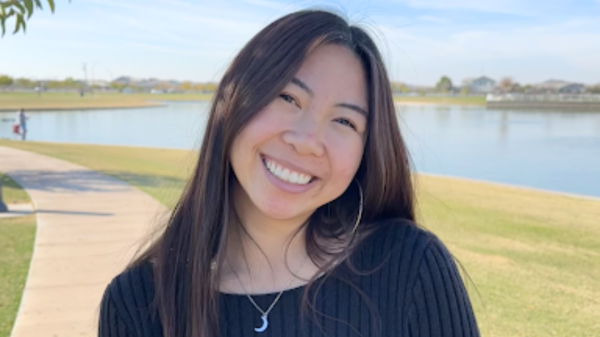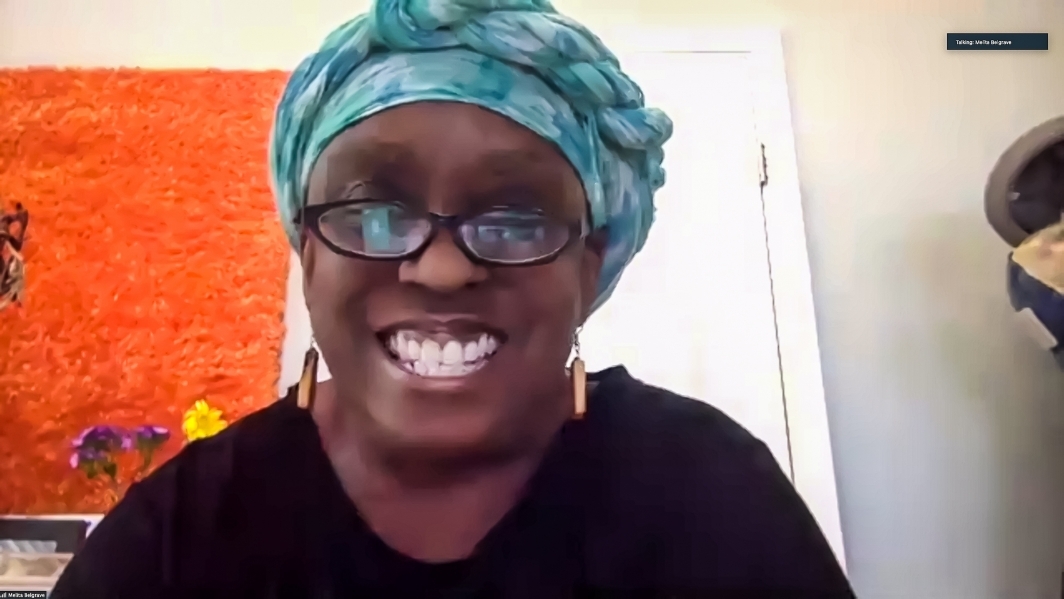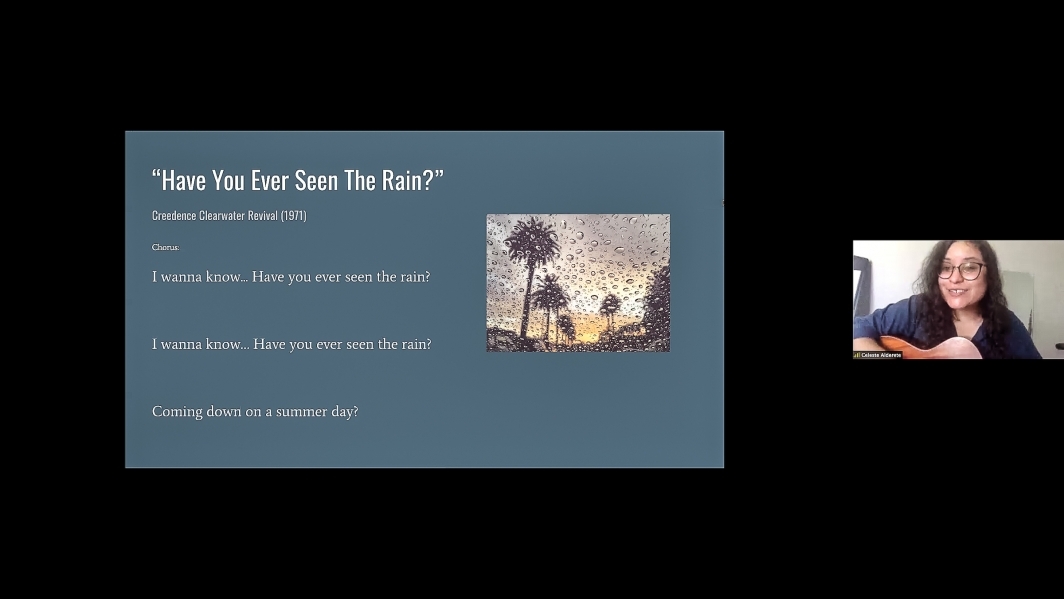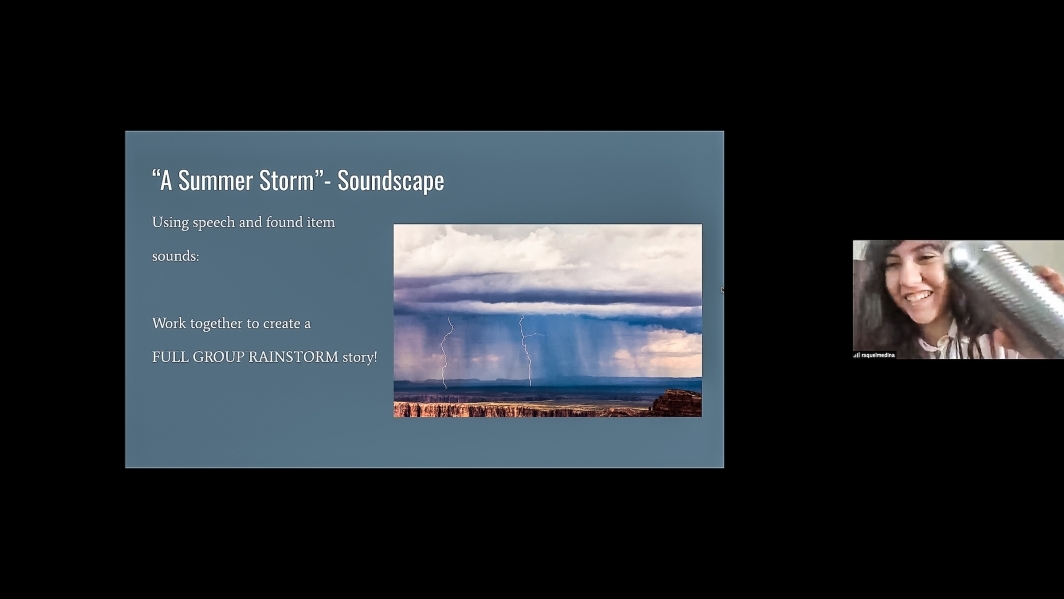ASU students make sure the music therapy plays on for clients at home
Videos, interactive Zoom sessions help with intervention goals

For an older person with dementia, a rousing rendition of big-band music might stir some memories. And when that older person claps or sings along, the brain connection is even stronger.
That’s one way music therapists can help people have a higher quality of life. Gathering together in an interactive music session can enhance memory and build social and communication skills.
Sadly, the COVID-19 pandemic has stopped gatherings. Senior centers have closed and people with underlying health conditions are staying home.
But at Arizona State University, the music therapy has played on. Melita Belgrave, an associate professor of music therapy in the School of Music, has had her students create virtual sessions. In the spring semester, they made videos that are being used by senior centers in the Valley. And over the past several weeks, the students have interacted on the Zoom platform with adult clients who have traumatic brain injuries.
“You think about each center serving 100 people a day, and they’re used to their social interactions, with the activities changing every 30 minutes, so they’re fast paced,” Belgrave said.
“So this doesn’t mean we stop serving older adults or individuals with traumatic brain injuries. We have to provide ways for them to be interactive, and they are hungry for it.”
At a recent music therapy session, Belgrave and five students worked with two clients, who typically attend the Tempe Adult Day Health Services center. Everyone tuned into Zoom from their homes. The women had already been assessed by the center’s recreation therapist, who recommended goals.
“They’ve been referred to the center because their social skills are not where they need to be,” Belgrave said.
Therapists use a variety of techniques to elicit and reinforce the desired outcomes. Lauren Andera, a music therapy graduate student, led the first part of the session by showing a short, funny video of a cello player. Then, she asked the clients to make a beat along with the music.
“We’re going to improvise based on how we’re feeling,” Andera said.
“Think about how we’re feeling today. It’s the middle of June, we’ve been in the house a long time but now we can see our friends. We can tap on a table, click our tongues, clap our hands.”
The students watched how the clients responded to different interventions. It’s not always easy to see everything they’re doing on the small screen.
“(The students) are used to doing it live and seeing that ‘Oh, they respond cognitively when I do this and they don’t when I do this,’” Belgrave said.
“You have to be very intentional about how you are responding to everyone even when they’re muted.”
Next, Celeste Alderete, a graduate student, led the two women in a storytelling exercise about summertime rain.
She talked about rain in July and beat on a drum to simulate raindrops. Then she asked the clients to talk about rain. What sounds do they hear?
“We’re going to use our voice and our speech and the items to make a storm story,” she said.
Alderete sang the Creedence Clearwater Revival song “Have You Ever Seen the Rain” while the women interacted with the song. At the end of the session, everyone said their goodbyes.
Because virtual therapy is new, the students are learning as they go, according to graduate student Sereen El-Ghossaini.
“I was the first person to lead a session, so the data collection was as simple as a ‘yes’ or ‘no,” she said.
“Did they interrupt each other during a sharing moment and if so, how often?
“Now it’s gotten to, ‘Can I get them to answer an on-topic question?’ And I track the number of times to get a little more numerical data,” El-Ghossaini said.
Alderete said that the virtual sessions have allowed her to be more keenly observant of the clients’ behavior than she has been in person.
“On Zoom, it’s mostly their face and shoulders and you can’t really see small movements in their lower body,” she said. “You have to be aware of the small movements you’re seeing and think about what the client is doing that still pertains to the goals or objectives.”
Several of the students also were in Belgrave’s spring semester class, which, like all of ASU, had to quickly pivot to remote learning after spring break in March. The classmates were in the middle of their term working with clients at the Tempe center, which closed.
“We had seven more weeks to go, and I knew we had to come up with something meaningful,” Belgrave said.
The students ended up creating a series of weekly videos, which are now posted on the home page of the Foundation for Senior Living, which oversees the Tempe center as well as facilities in Glendale and Phoenix. With a theme of “around the world,” the student groups performed songs, taught interactive movements and showed how to make rhythms with ordinary items like a plastic container filled with pasta. Clients can watch the videos at home and family members can help with the activities.
“Every week I would cry when I would watch those videos,” Belgrave said. “They rose up and they learned.”
Virtual therapy is so new that there isn’t much research on it, and it likely won’t work for everyone or in every setting, Belgrave said.
“There are limitations when we can’t make music together. You have to do interventions that are interactive — that will get something out of the client,” she said. “You have to be very intentional.”
And while there have been technical glitches, the technology itself hasn’t been a hindrance.
“The use of something new can help older adults and people with traumatic brain injury feel connected to society because they’re doing something that everyone else is doing,” Belgrave said.
“They feel they’re not behind the times.”
The experience has opened the students’ perspectives about virtual therapy.
“This could be another way of providing services,” El-Ghossaini said.
“I’ve had clients who had to cancel in the past because they were not able to get a ride to the site. So it’s awesome that we could have this option available and still have them be involved.”
Top image by iStock/Getty Images
More Arts, humanities and education

ASU+GSV Summit tackles big questions about AI, technology, education
Editor's note: We'll be updating this story daily throughout the summit. The annual ASU+GSV Summit kicked off in San Diego on Sunday, drawing thousands of leaders for a four-day event that focuses…

Sanford School Dean’s Medalist passionate about serving families, community
Editor’s note: This story is part of a series of profiles of notable spring 2024 graduates. Helping families and children succeed in society takes knowledgeable and understanding professionals. Few…

Sociology student passionate about preventing domestic and gender-based violence
Editor’s note: This story is part of a series of profiles of notable spring 2024 graduates. With so many diverse career options available to students, uncovering individual passions and ambitions is…


